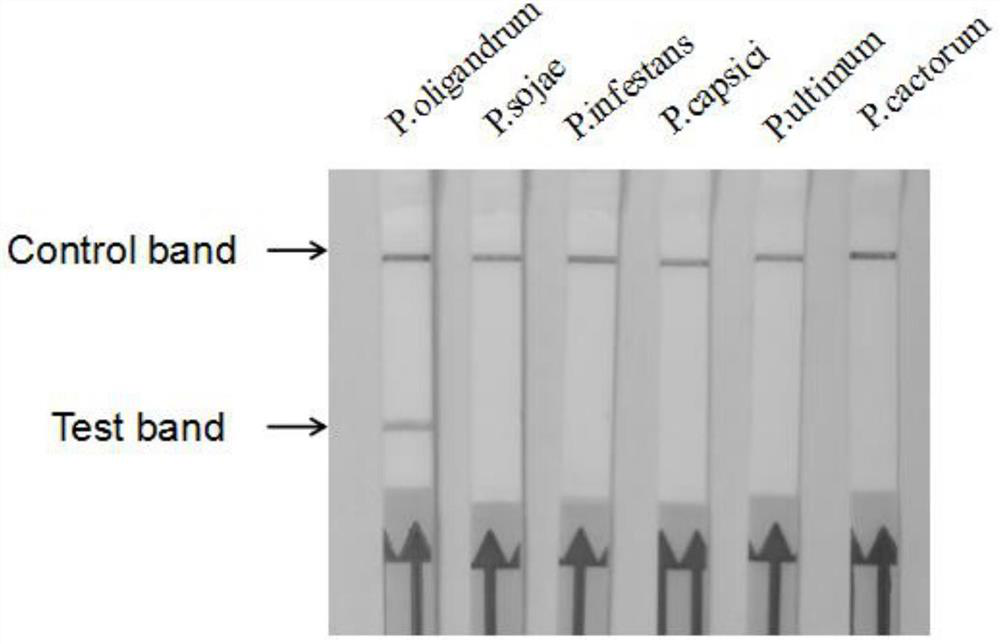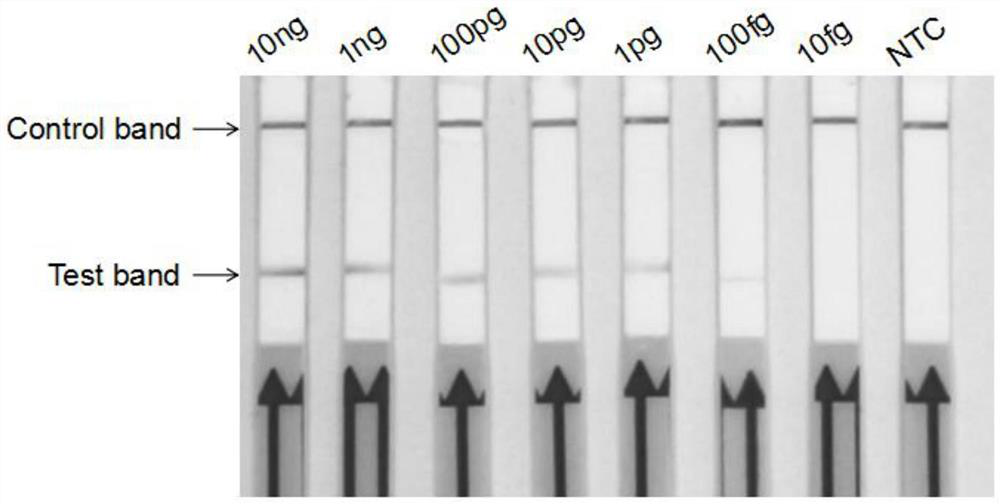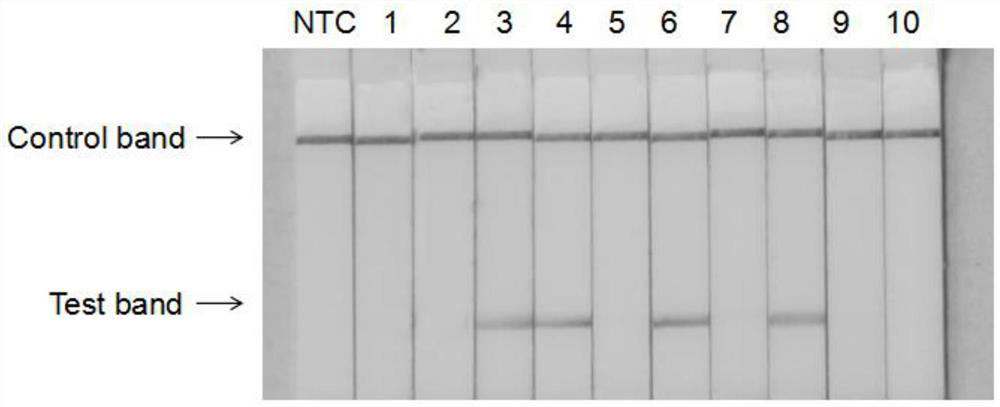Primer probe composition for detecting pythium oligandrum, kit, application and detection method
A primer probe, Pythium technology, applied in the field of genetic engineering, can solve the problems of long cycle, poor specificity and low sensitivity of detection methods, and achieve the effects of increasing application value, good practicability and cumbersome operation.
- Summary
- Abstract
- Description
- Claims
- Application Information
AI Technical Summary
Problems solved by technology
Method used
Image
Examples
Embodiment 1
[0041] Embodiment 1: Design, screening and verification of specific primers and probe compositions of Pythium oligandrum
[0042] In order to obtain the specific primer and probe composition of Pythium oligandrum, first, based on bioinformatics tools, using comparative genomics methods, sequence-specific genes were identified on the Pythium oligandrum genome as detection targets. First, the nucleic acid sequences of all the genes on the Pythium oligandrum genome were compared to the other nine sequenced Pythium species (Pythium irregulare, Pythium insidiosum, Pythium vexans, Pythium myriotylum, Pythium brassicum, Pythium ultimum, Pythium arrhenomanes, Pythium guiyangense, Pythium iwayamai) all gene sequences, and found 189 Pythium malogyno genes that have no homologous genes in other Pythium species. Then, by comparing with NCBI's NR database Blast, 6 relatively specific genes were selected as detection targets, and 6 sets of primer compositions were designed.
[0043] Primer...
Embodiment 2
[0062] Embodiment 2: the specificity test of the primer of Pythium oligandrum and probe composition
[0063] Primer and probe combination for detecting Pythium oligandrum: the forward primer oilF has the nucleotide sequence shown in SEQ ID No.1, and the reverse primer B-oilR has the nucleotide sequence shown in SEQ ID No. The nucleotide sequence shown in 2, the probe T-oil has the nucleotide sequence shown in SEQ ID No.3.
[0064] The above-mentioned primer-probe composition was used to prepare a kit, and the concentration and dosage of each reagent in the kit were: 2.1 μL 10 μM forward primer oilF, 2.1 μL 10 μM reverse primer B-oilR, 0.6 μL 10 μM probe T-oil, 29.5μL Rehydration Buffer, 11.2μL DEPC-treated water, 2.5μL 280mM MgAC and dry enzyme powder were used to prepare a 48μL reaction system.
[0065] Extract the genomic DNA of the sample to be tested, take 2 μL of the sample DNA as a reaction template, add 48 μL of the detection solution in the kit to carry out recombinas...
Embodiment 3
[0067] Embodiment 3: the sensitivity test of Pythium oligandrum recombinase polymerase detection
[0068] In order to determine the sensitivity of the recombinant enzyme polymerase detection method, the genomic DNA of Pythium oligandrum was measured with a spectrophotometer and then diluted 10 times. The DNA concentration range was set at 10ng-10fg, and the DNA of each concentration after dilution was diluted. 2 μL of solution was used as a template, and DEPC-treated water was used as a negative control, and 48 μL of the kit solution was added to carry out the recombinant enzyme polymerase amplification reaction. The reaction procedure was: incubate at 39°C for 25 minutes. After the reaction, use lateral flow chromatography test strips to detect the amplification product, and judge the detection result according to the color change of the detection line indicator band. The result shows: DNA concentration can observe band at test strip detection line place in the scope of 10ng-...
PUM
 Login to View More
Login to View More Abstract
Description
Claims
Application Information
 Login to View More
Login to View More - R&D
- Intellectual Property
- Life Sciences
- Materials
- Tech Scout
- Unparalleled Data Quality
- Higher Quality Content
- 60% Fewer Hallucinations
Browse by: Latest US Patents, China's latest patents, Technical Efficacy Thesaurus, Application Domain, Technology Topic, Popular Technical Reports.
© 2025 PatSnap. All rights reserved.Legal|Privacy policy|Modern Slavery Act Transparency Statement|Sitemap|About US| Contact US: help@patsnap.com



